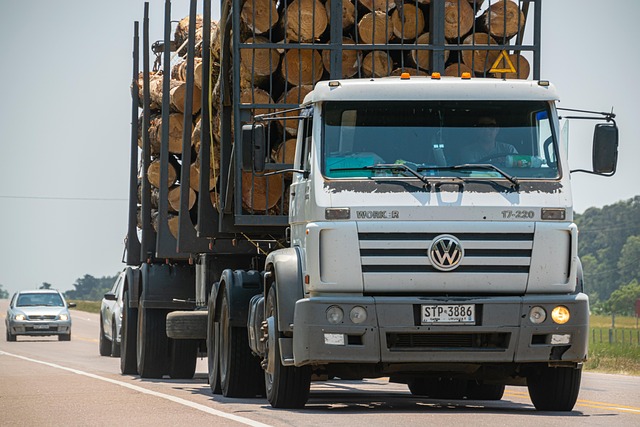Register Car California: Step-by-Step Guide to DMV VIN Verification
Looking to register your car in California? This comprehensive guide walks you through every step, ensuring a smooth process. First, understand the eligibility requirements for car registration in Cal…….

Looking to register your car in California? This comprehensive guide walks you through every step, ensuring a smooth process. First, understand the eligibility requirements for car registration in California. Next, gather all necessary documents, including proof of ownership and insurance. Perform a crucial DMV VIN verification to ensure your vehicle’s authenticity. Then, complete the application process at your local California DMV office. Pay the required fees and obtain your registration papers.
- Understand Eligibility Requirements for Car Registration
- Gather Necessary Documents for DMV Visit
- Perform Vehicle Identification Number (VIN) Verification
- Complete Application Process at the California DMV
- Pay Registration Fees and Obtain Registration Papers
Understand Eligibility Requirements for Car Registration

Before you begin the registration process, it’s crucial to understand if your vehicle meets California’s eligibility requirements. To register a car in this state, you must first ensure that your vehicle is legally imported and has passed all necessary safety inspections. The California Department of Motor Vehicles (DMV) conducts these checks, which include verifying the Vehicle Identification Number (VIN) data. This process, known as VIN verification, is essential to confirm the vehicle’s history and ensure it complies with local standards.
One convenient way to facilitate this step is through a mobile vin verifier or inspection service. These services allow you to have your VIN checked remotely, saving time and effort. By using a mobile vin inspection app, you can quickly input your VIN details and receive instant verification, making the initial registration process smoother and more efficient.
Gather Necessary Documents for DMV Visit

Before heading to the DMV, make sure you have all the required documents. This includes your vehicle’s registration certificate from the previous state (if applicable), proof of insurance, a valid driver’s license, and the vehicle’s title. The California Department of Motor Vehicles (DMV) also requires a Vehicle Identification Number (VIN) verification, which can be done through a mobile vin inspection or a standard inspection at their offices. This process is crucial to ensure that your car matches the details on its registration documents.
Additionally, gather any other relevant paperwork such as a purchase agreement or lease documents if you’ve recently acquired the vehicle. A mobile vin verifier can assist in this step by providing quick and convenient VIN verification services, ensuring you have all the necessary information for a smooth DMV visit.
Perform Vehicle Identification Number (VIN) Verification

Before you can register your car in California, it’s crucial to perform a Vehicle Identification Number (VIN) verification. This process ensures that your vehicle’s details match the information on record with the Department of Motor Vehicles (DMV). Many individuals opt for a mobile vin verifier or conduct a vin inspection themselves to streamline this step. You can easily verify the VIN by checking the car’s dashboard, driver-side door frame, or under the hood—common locations where the number is etched or stamped.
Once you have noted down the VIN, compare it with the data provided by the DMV. This verification is a critical part of the registration process as it helps prevent fraud and ensures that your vehicle meets all safety standards. In California, having an accurate VIN inspection can save time and potential headaches during the registration procedure.
Complete Application Process at the California DMV

To complete the registration process for your car in California, you’ll need to visit a local Department of Motor Vehicles (DMV) office or use their online services. Start by gathering all required documents, including proof of identity, residency, and insurance coverage. Once prepared, submit an Application for Title and Registration (Form DVF 140). This form requires detailed vehicle information, such as make, model, year, and VIN (Vehicle Identification Number).
A crucial step in the process is the DMV’s vin verification, ensuring your car’s authenticity. In some cases, you can use a mobile vin verifier to conduct an initial inspection before visiting the DMV. This involves scanning the VIN to check for any discrepancies or reported issues, which can save time and streamline the registration procedure.
Pay Registration Fees and Obtain Registration Papers

After completing your vehicle’s inspection, the next step is to pay the registration fees and obtain your registration papers. This process involves visiting a California Department of Motor Vehicles (DMV) office or using their online services, depending on your preference. You’ll need to present your vehicle’s identification number (VIN) for a successful DMV vin verification, which ensures that all documentation is accurate.
There are various ways to facilitate this process. Some individuals choose to conduct a mobile vin inspection or utilize a mobile vin verifier to streamline the initial steps, saving them time and effort. Once your VIN is verified, you can calculate and pay the registration fees, which vary based on your vehicle’s type and age. After payment, you’ll receive your registration papers, marking the official registration of your car in California.
Registering a car in California involves understanding eligibility requirements, gathering essential documents, performing a DMV VIN verification, completing the application process, and paying registration fees. By adhering to these steps and ensuring accurate information, you can smoothly navigate the car registration process in the Golden State. Remember, proper documentation and a valid vehicle identification number (VIN) verification are crucial for a successful registration.







